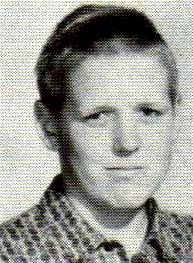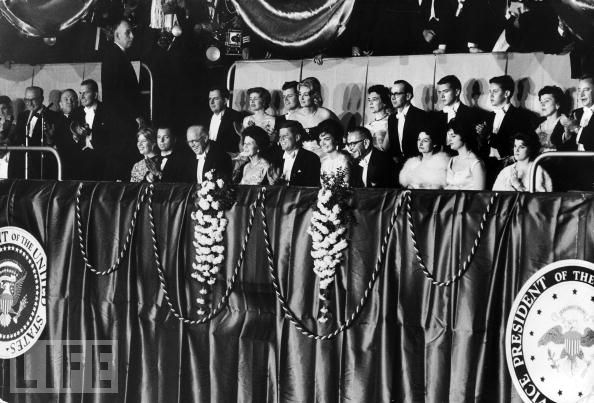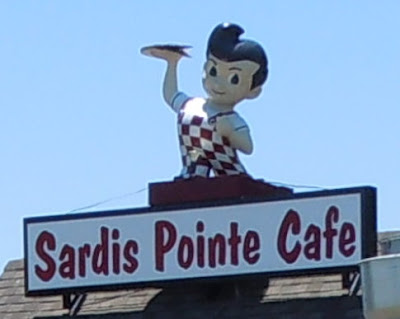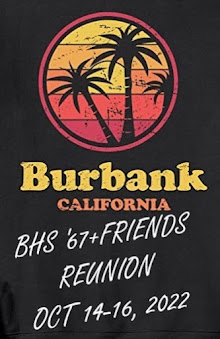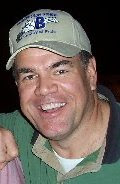YIKES!!!
Thought this comment pretty right on:
"Bonuses for public servants! Unbelievable . . . now I have heard everything. No wonder our local, State and Federal government is failing. How can these people believe they deserve "bonus's" with tax dollars. That is some logic. We are doomed if that is the level of thinking in our political institutions. If you want a bonus you go into the private sector where the purpose is to make money . . . not use tax dollars. This is "fuzzy thinking" and lack of integrity in our public officials. I am stunned at this revelation. This is criminal! "
Burbank has given $4 million in city bonuses since 2007
Documents the city fought in court to keep out of public view show a work culture built around the bonus system. One hundred employees got an extra $10,000 or more during the four-year period.
By Gretchen Meier and Maria Hsin, Los Angeles Times
http://www.latimes.com/news/local/la-me-0702-burbank-bonus-20110702,0,7586037.story
July 2, 2011
Hundreds of Burbank city employees have received a collective $4 million in bonuses since July 2007, according to documents the city fought in court to keep out of public view.
The records released by city officials reveal a work culture built around that bonus system, which for some employees has amounted to tens of thousands of dollars in the last four years alone. It dwarfs a bonus program in Glendale, a city nearly twice as large, which distributed $1 million during a 10-year period to top managers.
Burbank city executives have defended the bonuses as an important tool in retaining top talent, but records show that the annual payouts extend to hundreds of rank-and-file employees each year. Over time, the bonuses — which range from $30 to $22,000 at a time — can accumulate and add significantly to their salaries, and the city's pension obligations.
The employee at the top of the list, Burbank Water and Power General Manager Ron Davis, pulled in $79,000 in bonus pay during the four-year period. Davis' total salary in 2010 was $263,028.
Public Works Director Bonnie Teaford, who made $207,176 last year, was paid $55,000 in bonuses during the last four years. Other department directors — Management Services, Information Technology and Library Services — each accumulated $31,500 to $40,000 in bonus pay during the same period, according to the records.
City Council members noted Thursday that they had suspended bonuses for mostly executive-level employees for the coming fiscal year, given a budget in which library upgrades were put off, fire services were reduced and fees were raised.
"As a result of that, we are returning that money to city services, which is important," said Councilwoman Emily Gabel-Luddy. "Frankly, it was a very important step to take. Actually, it was critical. And we took it."
The release of the records ends a months-long fight between the city and the Burbank Leader, which filed a public records request seeking information about bonus amounts given to individual employees. Burbank denied the request in January, arguing that it would harm employee morale and violate workplace privacy rules.
But the newspaper, which is owned by the same parent company as the Los Angeles Times, filed a lawsuit. A Los Angeles County Superior Court judge in May sided with the paper, ordering city officials to release the information.
In the weeks leading up to the documents being released, residents had been critical of the city's decision to bail out a fledgling municipal golf course while trimming fire and youth job services and putting off library upgrades to close an $8.7-million budget gap. But when told of the total bonus amounts — and that they extended to hundreds of employees — residents were incensed.
"That's outrageous!" said Emily Lindwood, 56. "Families are losing their jobs, insurance and homes in record number and they are giving themselves bonuses? What is our world coming to? How can I get a job with them?"
Patricia Garcia, 38, agreed: "Things like this just stink of corruption, even if there isn't any going on. After Bell, I think everything needs to be scrutinized, especially people getting these huge bonuses."
But the majority of employees who received bonuses this past year will continue to be eligible because the payouts are written into their union contracts. The City Council would have to renegotiate those terms to completely suspend the system.
A $7-million increase in pension costs was singled out as the main contributor to Burbank's $8.7-million budget gap for this fiscal year.
In the fiscal year 2009-10 alone, the city doled out $1.16 million in bonuses for 527 city employees, or about 43% of the of 1,214 eligible workers. One hundred employees earned $10,000 or more in bonuses during the four-year period.
The data also show that 19% of those who received a bonus did so four years in a row.
Even as tax revenues have been hit by the recession, the cumulative amount of bonus pay has increased. In the fiscal year 2007-08, the city distributed $1.07 million. In 2008-09, that amount increased to $1.11 million, and in 2009-10 it rose to $1.16 million as the City Council continued to expand the program for some unions.
To earn a bonus, employees must meet specific goals and objectives established at the start of the fiscal year, although oversight of how they are divvied up varies by department and depends on the management structure, officials said.
Former Burbank City Manager Mary Alvord said the bonuses were an important tool to reward hard-working employees, but agreed that the amounts should be public.
"You are paid by taxpayers' money," Alvord said. "As a taxpayer, you have the right to know. And you can't play hide-and-seek with that."
gretchen.meier@latimes.com
--- end ---
Residents 'blown away' by bonus amounts
By Gretchen Meier,
gretchen.meier@latimes.com
http://www.glendalenewspress.com/news/tn-gnp-0703-bonussidebar,0,7547023.story
July 1, 2011 | 12:41 p.m.
The public reacts to information recently released by Burbank officials that shows city employees have recieved $4 million in bonus pay since 2007.
“I’m blown away by that amount of money. That’s incredible — I want to work for Burbank.”
— Jerad Moreno, 28, outside of Porto’s Bakery in Burbank
“That’s outrageous! Families are losing their jobs, insurance and homes in record number and they are giving themselves bonuses? What is our world coming to? How can I get a job with them?”
— Emily Lindwood, 56, Porto’s Bakery in Burbank
“I don’t know, it’s fair because there’s the possibility and these people are actually doing a really good job. On the other hand, $22,000 or even $5,000 is a lot of money for ‘a really good job’ every year.”
— Paul Ivanov, 31, outside of Starbucks, Empire Center
“Things like this just stink of corruption, even if there isn’t any going on. After Bell, I think everything needs to be scrutinized, especially people getting these huge bonuses....”
— Patricia Garcia, 38, Starbucks, Empire Center
“That’s scary. I live on the border between Burbank and Glendale, but I come to Burbank for the services. Just in the past few years I’ve noticed less librarians and the children’s department seems to be okay, but I haven’t gotten as many books. It’s everywhere, seems like there’s less police and fire on the street and times are tough for everyone. They’re city employees and we all have to take a cut. I’d even be happy with a $30 bonus.”
— Sarah Garcia, 30, outside of Burbank Central Library
“They are making cuts from regular working people. Instead they should use the money to open up more jobs. They’re just burning the money and if they open more work places, there are not going to be as many problems with families.”
— Mike Matvosyan, 46, Burbank Central Library
--- end ---
Bonus payouts to city employees totals $4M
Documents show the city has paid out $4 million collectively since July 2007.
http://www.burbankleader.com/news/tn-gnp-0703-bonuses,0,4566838.story
Comments

Burbank City Hall. (File photo) |
By Gretchen Meier and Maria Hsin, maria.hsin@latimes.com
July 1, 2011 | 12:17 p.m.
Hundreds of Burbank city employees have received a collective $4 million in bonuses since July 2007, according to documents the city fought in court to keep out of public view.
A Los Angeles County Superior Court judge in May ordered city officials to release bonus pay amounts for individual employees to the Burbank Leader, which sued to obtain the information after its public records request was denied under the auspice that it would harm employee morale and violate workplace privacy rules.
On Thursday, City Council members noted that they had suspended bonuses for mostly executive-level employees for the coming fiscal year, given a budget in which library upgrades were put off, fire services were reduced and fees were raised.
“As a result of that, we are returning that money to city services which is important,” said Councilwoman Emily Gabel-Luddy said. “Frankly, it was a very important step to take. Actually, it was critical. And we took it.”
But the majority of employees who received bonuses this past year will continue to be eligible because the pay outs are written into their union contracts. The City Council would have to renegotiate those terms to completely suspend the system.
The records released by city officials reveal a work culture built around that bonus system, which for some employees has amounted to tens of thousands of dollars in the past four years alone.
Burbank Water and Power General Manager Ron Davis pulled in $79,000 in bonus pay during the four-year period, putting him at the top of the list. Davis’ total salary in 2010 was $263,028.
Public Works Director Bonnie Teaford, who made $207,176 last year, was paid $55,000 in bonuses during the past four years. The directors of Management Services, Information Technology and Library Services each accumulated between $31,500 and $40,000 in bonus pay during the same period, according to the records.
City executives have defended the bonuses as an important tool in retaining top talent, but records show that the annual payouts extend to hundreds of employees, many of them rank-and-file, each year. Over time, the bonuses — which range from $30 to $22,000 at a time — can accumulate and add significantly to their salaries, and the city’s pension obligations.
A $7-million increase in pension costs was singled out as the main contributor to Burbank’s $8.7-million budget gap for this fiscal year.
In fiscal year 2009-10 alone, the city doled out $1.16 million in bonuses for 527 city employees, or about 43% of the of 1,214 eligible workers. One hundred employees earned $10,000 or more in bonuses during the four-year period.
The data also shows that 19% of those who received a bonus did so four years in a row.
“Most of your top performers will continue to be your top performers each year, typically, unless something drastic [occurs],” said Management Services Director Judie Wilke, who earned a $12,000-bonus this year. “If you are a competent employee, you remain so.”
Even as tax revenues have been hit by the recession, the cumulative amount of bonus pay has increased. In fiscal year 2007-08, the city distributed $1.07 million. In 2008-09, that amount increased to $1.11 million, and then to $1.16 million in 2009-10 as the City Council continued to expand the program for some unions.
To earn a bonus, employees must meet specific goals and objectives established at the start of the fiscal year, although oversight of how they’re divvied up varies by department and depends on the management structure, officials said.
“We trust the department directors to review what’s brought to their desks,” said city spokesman Keith Sterling, who earned a $5,500 bonus this year.
Approval of a bonus may pass through three people before reaching a department chief. Amounts can be a percentage of a salary — such as the $123.71 listed for a Park, Recreation and Community Services employee — or a flat figure, like the $5,000 awarded to a city attorney.
City Manager Mike Flad, whose contract does not allow for a bonus, approves merit payments for executives.
Burbank’s employee bonus program dwarfs its counterpart in Glendale, a city nearly twice as large where only executives are eligible for the payouts.
Glendale, which suspended bonuses in 2008 due to mounting budget problems, distributed $1 million during a 10-year period to its upper management. The highest payout — $10,765.20 in 2007 — went to disgraced former Police Chief Randy Adams, who is now embroiled in a corruption scandal in the city of Bell. It was one of only three individual payouts of more than $10,000 since 1999 in that city.
But Burbank officials argue an “apples to apples comparison” isn’t possible with Glendale.
Former Burbank City Manager Mary Alvord, who teaches a management training course at Woodbury University for Glendale and Burbank employees, said the bonuses were an important tool to reward those “who work their butts off for the city.”
She cautioned that workplace morale would suffer after the Burbank disclosure because she saw it happen among Glendale employees after bonus pay figures there were made public.
Still, she said, “I agree it should be out there. You are paid by taxpayers’ money. As a taxpayer, you have the right to know. And you can’t play hide-and-seek with that.”
Melanie Hicken contributed to this report.



